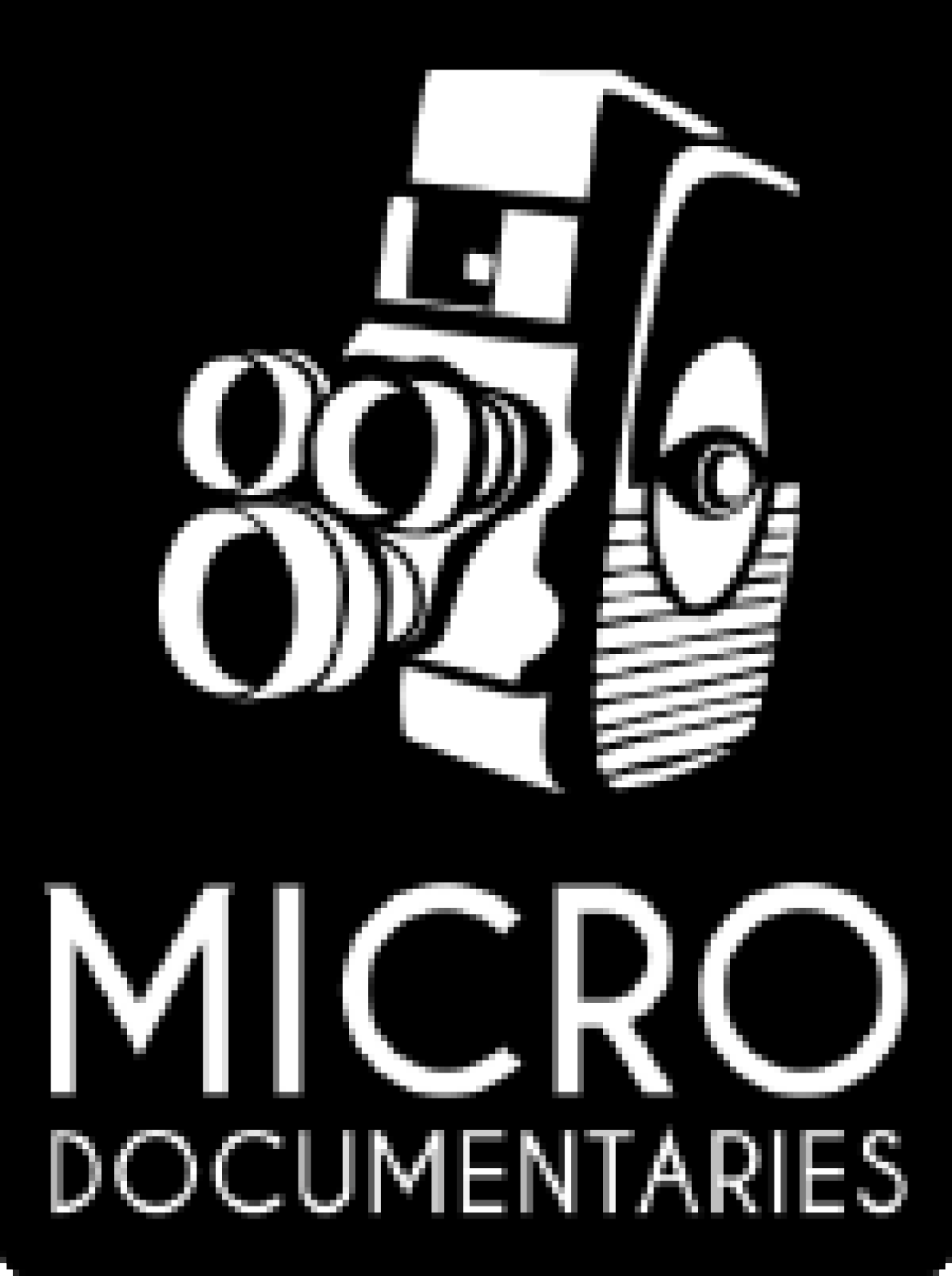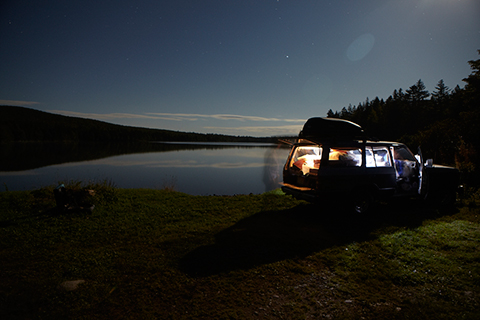People are always curious about how extreme autonomy works at Micro-Documentaries. Here’s an exciting example – two colleagues working while on a fabulous road trip across North America. This is definitely what I had in mind when setting up the company free of the concepts of office space and office hours. Do you have other examples of extreme autonomy? Please share. We would love to learn about them.
Everyone dreams of packing up their lives and hitting the road. In our case, we had been talking about making a change and moving out to California for quite a while. We knew we wanted to fit a North American road trip into the transition period but just couldn’t figure out how to make it work. With Kevin working full time in New York City, freeing ourselves from the 9-to-5 monotony seemed impossible, and funding a road trip like we’d been dreaming of therefore seemed out of reach. When the opportunity to join the Micro-Docs community came our way, we couldn’t have been more excited. Kevin immediately started planning the technicalities of how we would stay connected and work from the road.
Building a mobile office
First things first, we needed to choose the right vehicle for the job. Something affordable, easy to work on ourselves if need be, roomy enough to sleep us and hold all our supplies, and 4-wheel drive so we could spend as much time as possible on back-roads or off-road altogether. We settled on a 1988 Toyota Land Cruiser with almost 200,000 miles on it and ended up trading our little two-door whip for it outright.
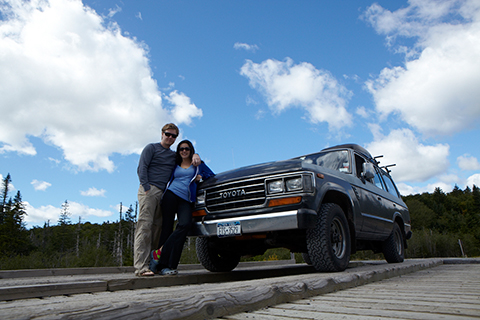
The authors pose for a picture beside their 1988 Toyota Land Cruiser
Next up, we needed to figure out how we could sleep and work in our new rig. To solve the first problem, we removed the back seats, and Kevin custom built a raised queen-sized bed platform that gave us a great bed and a whole lot of storage space. As for the second problem, we had to figure out how to power our electronics and keep everything up and running when parked without idling the engine and burning gas all day, which wasn’t tenable from an environmental or financial perspective. Thankfully, there was plenty of extra room under the hood of the Cruiser to install a second battery dedicated to powering our office equipment. We wired it into the truck so that it would charge up while we were moving and give us a full day’s worth of power to run our electronics while we weren’t. That way we wouldn’t drain the main starting battery at all and put ourselves at risk of getting stranded.
Finally we needed to be able to actually connect to the Internet. Since we both had AT&T iPhones, we bought a Verizon mifi device so we could be connected through either provider along the way. Between the Google call features, email and browsers on our iPhones and wireless hotspots along the way, we were confident we would stay well enough connected for the entirety of the trip.
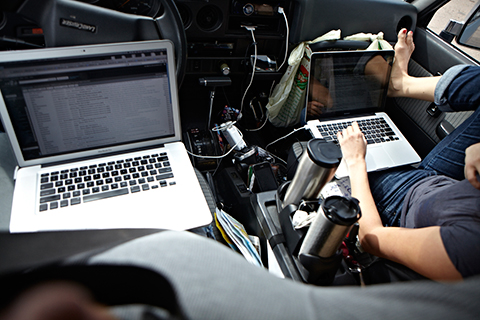
The inside of the Land Cruiser, outfitted with a second battery and a mifi device to keep the authors charged
and connected as they worked
We get underway
In a nutshell, our plan was to head north from New York City up the Atlantic Coast into Canada—New Brunswick, Nova Scotia, Prince Edward Island, Newfoundland. Then we would head back into the states, across the Great Plains, up into the Canadian Rockies, and on westward until we hit the Pacific. From there, we would track the length of the coast down to LA, then voyage back east across the American south.
Of course, we also planned to divert from our plans whenever a beautiful backcountry road or inspiring work place caught our fancy. We shoved off in September, cruising north across the border. Immediately delightful surprises started coming our way. In Newfoundland, we found this fantastic campground that somehow was wired with wireless internet through a little satellite receiver on a pole, a much welcomed commodity for us, as we had already discovered that international data roaming charges were truly a force to be reckoned with. Who would have thought that Canada would supply even their most remote campgrounds with wireless internet!
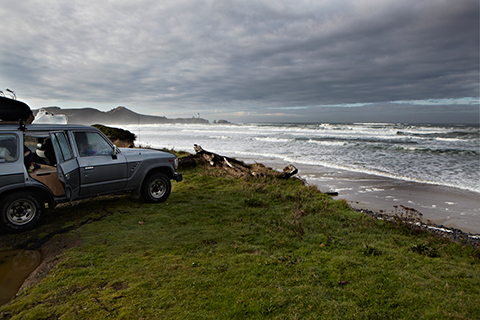
The authors have a stretch of pristine shoreline in Newfoundland to themselves
Even better, there was literally nobody at the campground, and we were able to choose the most beautiful site there was, overlooking a breathtaking pebble beach. We were in heaven and couldn’t believe that nobody else was there, taking advantage of such a beautiful place other than us. Until of course Hurricane Maria made landfall on Newfoundland that evening. Thankfully it didn’t land near where we were, though the wind and the huge ocean swells crashing on that previously serene beach made us think otherwise. Regardless, there was work to be done and we were both hunkered down in the truck, wobbling under the heavy winds, with our computers. Once the storm subsided, we ended up staying there for four days due to that little piece of heaven and its heavenly perk of free wireless internet.
Keys to mobile success
As we pushed on through Canada and across into the American West, we found ourselves more and more rejuvenated by our work-life balance. Making the choice of where we wanted our office to be was a daily breath of fresh air. Don’t get us wrong though, working autonomously doesn’t change the nature of the work, the scope of one’s responsibilities, or the amount of time one must devote to his or her work, but it can make the day a lot more pleasant and opens up a whole new world of possibilities for all of us to be part of a team that is not remotely geographically bound.
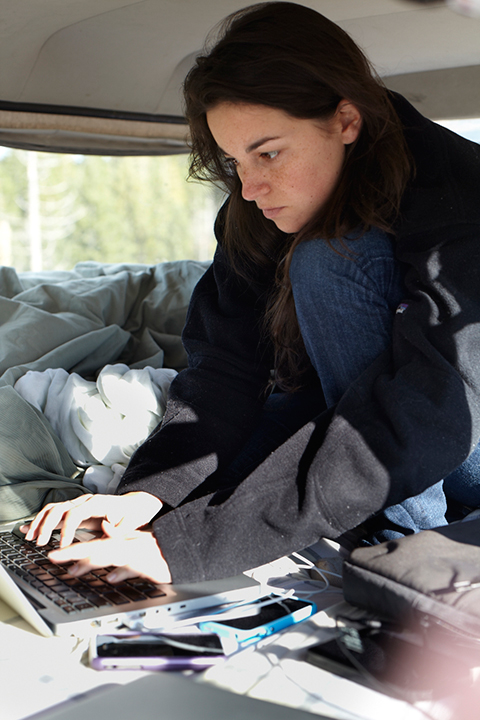
Katie Hilliard tackling a project on her computer at her “desk”
The cloud became our filing cabinet. The pdf became our printout. A shared Google document became our conference-room whiteboard. The list of online services that make such a model possible could go on forever, but the most important advantage that became clear to us on the road was that this type of work is a much more efficient way for an employee to work and for an employer to do business. We can have as close to a zero carbon workday as has ever been possible. Our office was our laptop computer, our phone, and an internet connection. We used virtually no paper, pens, or office supplies, and if you’re working from home, you burn no gas to get to work. It even increases the life of your shoes and clothes, as the eight-hour PJ work-day is hard to avoid sometimes!
The show goes on. And on.
And so we ventured on. We worked amongst buffalo in Yellowstone. We hiked into the snow-capped peaks of the Canadian Rockies and slept by a frozen glacial lake in two feet of snow. We drove for hours down almost unpassable logging roads and found some of the most amazing, pristine, off-the-beaten-path places. We lingered through the Black Hills of South Dakota, through the Bighorns, made it out West, goggled over the vastness of the Pacific, cruised down Highway One.
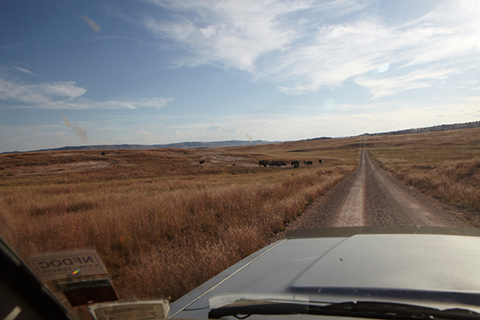
The authors spy wild buffalo through the windshield of the Land Cruiser
And just when it felt like we had filled our quota for adventure, we kicked it back into high gear and headed back through Arizona, New Mexico, Texas, Oklahoma, through the Ozarks of Northern Arkansas and southern Missouri, towards the Smokey Mountains of Eastern Tennessee and Western North Carolina, and on up along the Blue Ridge Parkway toward DC. We arrived back in New York City almost three months to the day from when we set off.
Remarkable, in all that time we had zero breakdowns and zero speeding tickets. We also fell behind on zero deadlines. Indeed, when we think about the single highlight of our trip, it has to be the fact that we were able to pull it off while working. Our three months of living and working on the road was the enlightening result of mobile and cloud networking technologies, forward thinking business practices, a fantastic community of adventurous colleagues, and a healthy dose of ingenuity and determination.
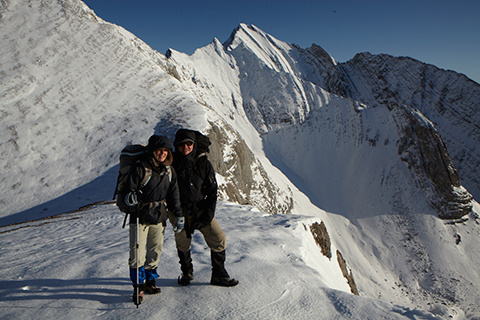
The authors summit a snowy pass in the Canadian Rockies
[dotted_separator]

Kevin Mills is a Production Manager at Micro-Documentaries.
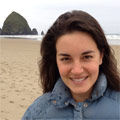
Katie Hilliard is a Production Coordinator/Manager.
